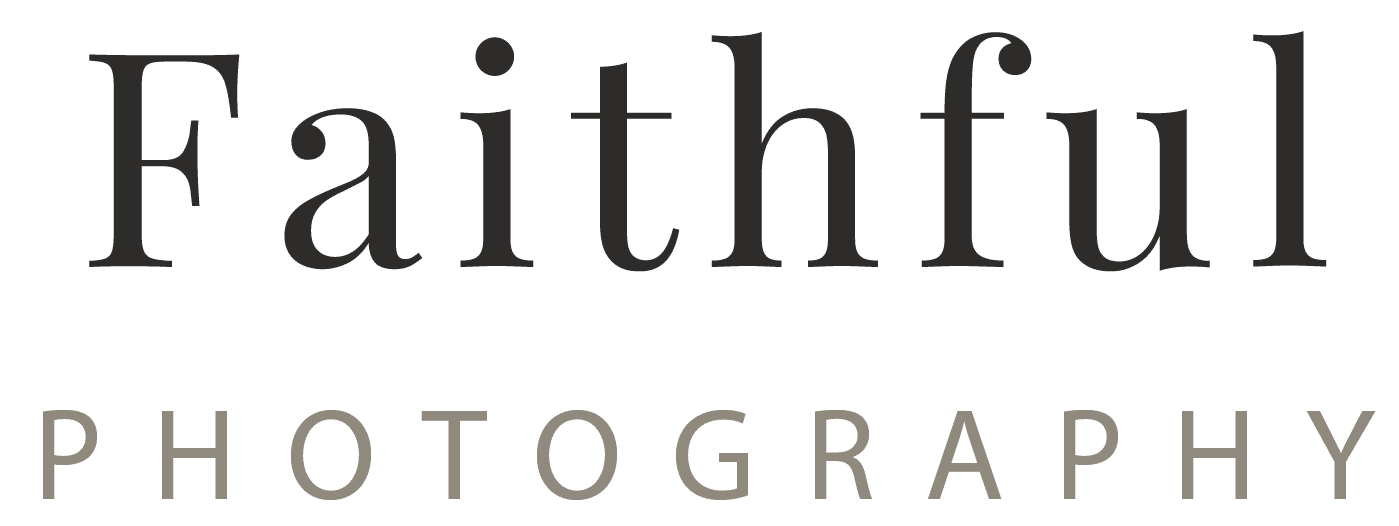

Do you want to pursue photography? Well then, do you know the different types of photography out there?
Photography depends on the subject, equipment required, lighting and technique, among many other things. It is so vast that there is something in store for everyone. For instance, if you love hiking or camping, adventure photography will appeal to you the most. If you’re a fashion enthusiast, you might want to try your hands at fashion photography.
Whether you try different photography styles or want to focus on one niche, knowing the basics of each type will be beneficial. Learning about various possibilities of shooting one subject will further help in enhancing your creativity and skills.
So, without further ado, let’s take a look at the 50 most popular types of photography you must know about.
1. Film Photography
Originated in the 1800s, the ‘nitrate film’ was made of nitrocellulose. Kodak introduced the ‘safety film’ in 1908, which was not as flammable as its predecessor. Thereafter, Kodachrome brought colour to home movies in 1935, followed by 35mm film photography.


Numerous filters and layers help produce a coloured photograph from a 35mm still camera. As compared to coloured photos, processing black and white pictures were easier and not dependent on temperature. However, for some reason, producing black and white photographs were not as commercially widespread.
Film photography was the most popular pick till the early 2000s and later got replaced by digital alternatives. But with the shift towards vintage fashion, many photography enthusiasts have shifted back to film cameras from Fujifilm and Kodak.
2. Editorial Photography
As the name suggests, this form of photography is typically meant for magazines, newspapers, catalogues and the like. With the picture taken at a spontaneous moment, most of the time, editorial photographs convey a story to educate, inform, or create a strong reaction from the audience.
These types of pictures are mostly used in print media and are often supported with text. Although editorial shots may look similar to commercial photos, the former cannot be used commercially without adhering to its license.
3. Lifestyle Photography
Candid or posed, lifestyle photography aims to shoot ‘real-life’ scenarios, narrating the lives of the people present in the picture. It serves to document the truth while portraying it artistically. Similar to family photography and fashion photography, this type of photography is used for commercial, editorial or personal purposes.
One of the top photo-sharing websites, Instagram, is full of influencers who usually share shots that fall under this category.
4. Minimalist Photography


Along with minimal subject matters, clean cuts and lines, bold colours, textures and angles play a vital role in minimalist photography. Following the art movement that started post World War II, this concept of photography highlights the essence of the subject. Most of these shots do not include people.
Less is more when it comes to minimalism in photography that offers a sense of simplicity by eliminating all the non-essential elements from the frame.
5. Commercial Photography
For commercial use, such shots aim at marketing a product or service or support a business. These pictures help such brands and organisations make money. This category often includes other types of photography, like food photography, architectural photography and more.
Besides using products of a particular brand, commercial photographers may also require models and celebrities to attract their fan base. With sites like Instagram, which has become the top platform for marketing, commercial photography has grown into a high paying job opportunity.
6. Macro Photography
Also known as macrography or photomacrography, this form requires incredibly close-up photography of tiny subjects. Popular subjects for macro photography include insects, flowers, droplets, jewellery and fabrics.
Macro photographers use a special kind of lens that allows 1:1 or 1:2 magnification. DSLR and mirrorless cameras are the most popular choice for capturing tiny details with the right lighting and angle. Additional factors like depth of field, flash settings etc, gain more importance in this niche.
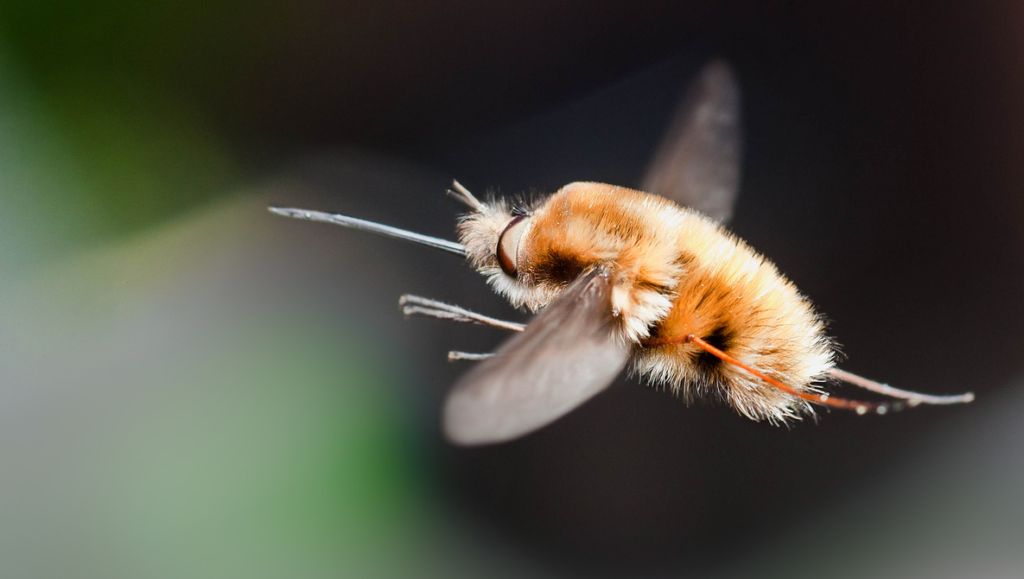

7. Portrait Photography
One of the most demanding, yet common types of photography is a portrait. The subject can be one person or a group of people and the photo revolves around their pose, facial expression, backdrop and lighting. Also known as portraiture, this category includes headshots and self-portraits as well.
The most crucial factor in portrait photography is lighting. From three-point lighting to butterfly lighting, there is a wide variety of lighting options for photographers. While environmental portraits highlight the surrounding environment along with the subject, other portraits may use the bokeh effect to allow all attention to the subject.
Some notable portrait photographers from history include Edward S. Curtis and George Hurrell.
8. Fashion Photography
Practised since 1856, fashion photography highlights clothes and accessories, usually for advertising, editorials or commercial uses. Adolphe Braun was the first fashion photographer in history.
The backdrop for fashion photography can range from a chic studio to a natural landscape. Pictures shot during a fashion show also fall under this category. Usually, an entire team of stylists and makeup artists are involved in the process.
Fashion photography further branches into four categories – high fashion, editorial fashion, street fashion, and catalogue photography.
9. Abstract Photography
Also known as experimental, non-objective, or conceptual photography, this genre isolates the subject from its true form. It could be staged to convey an unrealistic vibe from a real object. With the help of light, shadow, colour, and texture, abstract photographers aim to portray a feeling that may be visibly ambiguous.
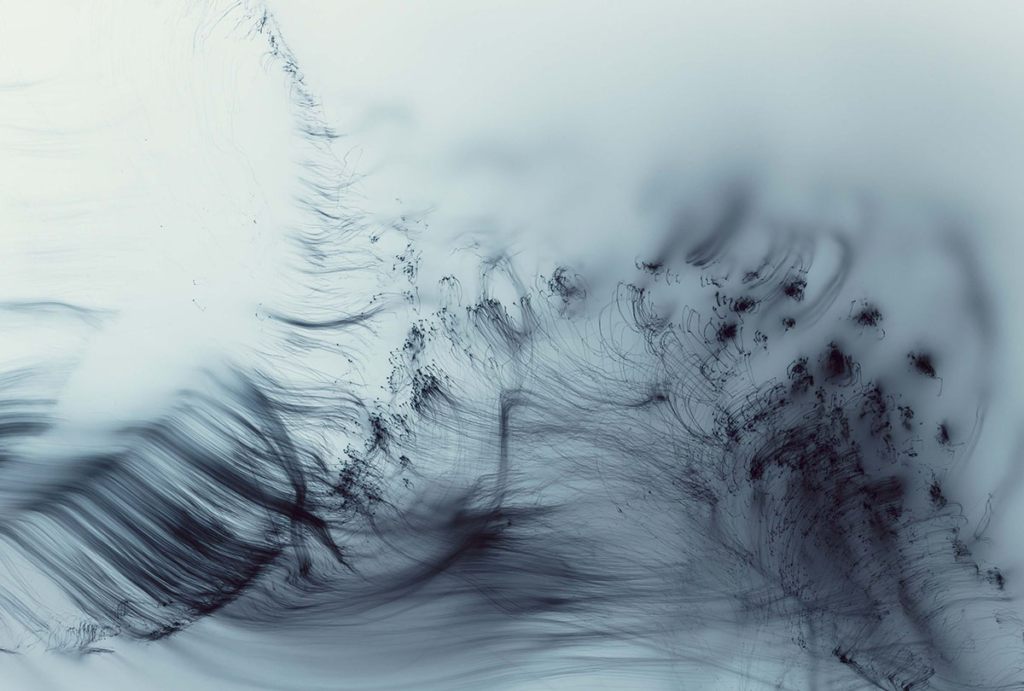

Since abstract photography has no commonly used definition, it includes a large variety of visual representations. Photographers specialising in this art either frame their photo in an unconventional way or opt for photo editing in the later stages.
Whether one understands abstract photography or not, there is no doubt that the images under this category look stunning.
10. Composite Photography
Did you think photographers work tirelessly for just one perfect shot? Think again because sometimes photographers require multiple pictures to layer them together for a whimsical result.
Started in the 1800s by Sir Francis Galton, a composite photograph or composite portraiture was an ‘average’ of pictures captured in multiple exposures. However, in recent times, this type of photography depends heavily on post-production. Editing tools like masks and layers are used to blend photos.
Composite photography may look realistic or surrealistic depending on what the photographer wants to convey. However, presenting a composite photo as a real-time image can cause serious consequences.
11. Landscape Photography
This category focuses on the bounty of nature – you may simply photograph a lush meadow or take it up a notch by shooting a thunderstorm. From forests to deserts, mountains to rivers – the options are endless when it comes to choosing a subject for landscape photography.
Most of the time, the terms ‘landscape photography’ and ‘wildlife photography’ are used interchangeably.
Intending to highlight Mother Nature’s boundless beauty that is still untouched by humans, most landscape photographers advocate for environmental consciousness. For instance, in 1872, William Henry Jackson’s photography was the catalyst towards the construction of the Yellowstone National Park.
12. Holiday Photography
This genre is like an umbrella term for portraits, food photography and candid photography for holiday events like Christmas, Hanukkah, etc. From capturing close relationships to a BBQ celebration, your imagination is the only limit!
While shooting with models, photographers need to ensure that the picture radiates the festive vibe and the warmth of togetherness. Depending on the season of the holiday, the mood changes drastically. While holidays in winter call for a cosy and welcoming setting, holiday photographs clicked in the summer should be brimming with fun and energy.
13. Family Photography


Taking family photos is a great way to enhance your skills if you are a beginner. Family photography glorifies the relationship between family members and is usually seen at weddings or family get-togethers. Such photographs are mostly used for personal use by the respective family.
Commercial family photography is more challenging since its motive is twofold. First, the photograph should market a particular brand. Additionally, it should show the tender bond between close members in the most authentic way possible. If hiring models, it is better if they are close and comfortable with each other to avoid any unnatural shots.
14. Sports Photography
This type of photography captures the fast-paced world of sports, preferably in an artistic way. Sports photographers often come under photojournalism and lend their services to sports magazines and newspapers. Needless to say, this niche requires high-quality cameras and equipment to capture swift movement and minute details.
However, a lot depends on the type of sport the photographer is trying to capture. For example, indoor sports like chess and table tennis require intense lighting and highlight the participants’ concentration and emotion. On the other hand, outdoor sports require a lens that captures a wide-angle to include the entire venue and the competitive spirit of the teams.
15. Adventure Photography
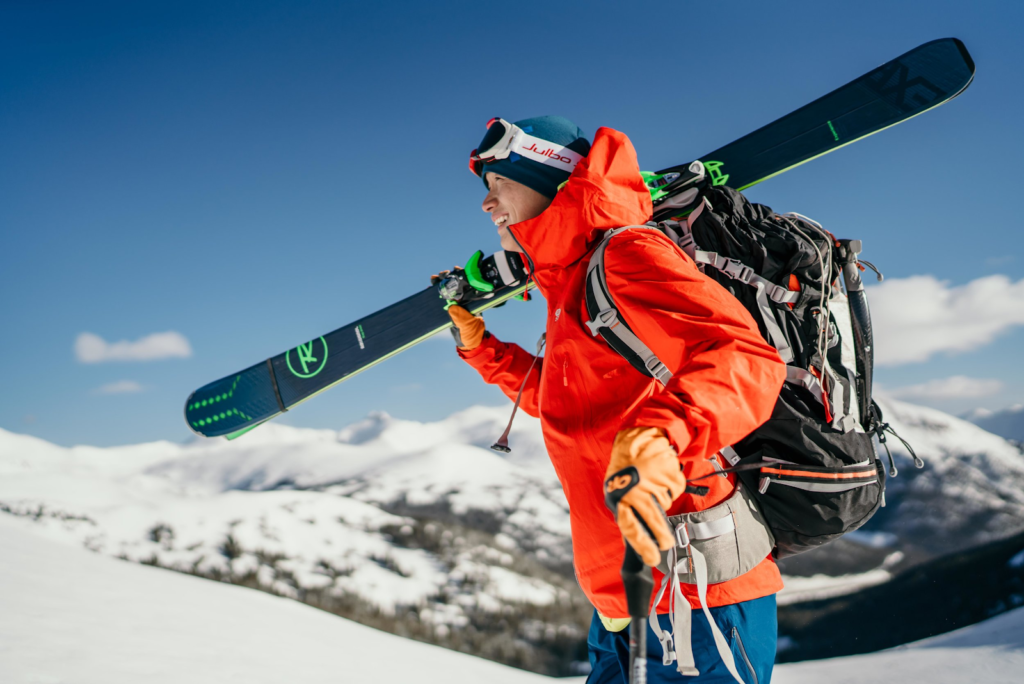

A favourite among adrenaline junkies, adventure photography captures thrilling outdoor adventures. This category involves breathtaking landscapes, adventure sports, dangerous surroundings and a model and a photographer who are ready to risk it all!
Other than being adept in photography, adventure photographers need to remain physically fit to travel to extreme locations, often during unfavourable weather conditions. Particular situations may require you to ace in extreme sports like mountaineering, skiing, paragliding etc. Jimmy Chin and Liz Carlson are two of the most famous photographers in this niche.
16. Creative Photography
A very vast category, creative photography consists of many techniques, concepts and trends, but is not limited to any one or even a bunch of them.
Since creativity cannot be taught and requires you to think out of the box, mastering this genre is a lifelong experience. Unlike the technical side of photography, you cannot perfect creative photography even after years of experience.
Creative photography demands experimentation and trying out something different. It could either mean manipulating the image during post-production or influencing the perspective with various props. Thus, pictures clicked through a glass prism, fisheye lens or through a toilet paper roll fall under this genre.
Creative photographers are encouraged to experiment with a range of filters, exposure, blurring effects, shutter speed and so on.
17. Photojournalism
Photojournalists aim to narrate a story through pictures. Often overlapped with war photography, street photography, and other categories, photojournalism stands apart due to its ethical measures. The visual media must adhere to the ethics of journalism, i.e. it must show the unbiased truth.
Used for covering news, photojournalism requires photographers to be ever-ready with their equipment and take spontaneous shots. Sometimes they may have to work in dangerous surroundings to capture the authenticity in their photographs.
The latest sub-genre of photojournalism is social documentary photography, also known as concerned photography. It includes pictures that focus on the social or environmental surrounding of the image. Photographs of child labourers, marginalised sections of the society, people struck with diseases, etc come under this category
18. Long Exposure Photography
This type of photography requires the cameraman to slow down the shutter speed and capture moving objects. Also known as slow-shutter or time exposure photography, the camera setting allows the still parts to appear sharp while the moving parts create blurry, glowing elements.
Depending on the delay in shutter speed, subject and lighting, long exposure photography creates brilliant images. Photographers usually opt for this form at night – from capturing moving cars that produce glowing routes to following star trails over an hour or so.
In addition to that, light painting is a popular technique that uses this genre to ‘paint’ with light strokes produced by a sparkler or torchlight.
19. Social Media Photography
This genre is not limited to any technique and subject. It basically includes pictures used for social media sites like Instagram, Twitter, Pinterest and other social media sites. Most of these images follow the lines of editorials, product photography, fashion photography and food photography.
The kind of pictures each social media personality uploads depends on their profession, online persona and lifestyle. Due to Instagram’s obsession with maintaining a cohesive feed, influencers are levelling up their photography game without keeping their posts monotonous.
20. Fine Art Photography
In this genre, the photographer takes the artist’s role and uses photography as a medium of creative expression. Such photographers seek fulfilment of their creativity by portraying an idea, emotions or message through a photographed image. The earliest fine art photographers would include John Edwin Mayall, Lewis Carroll and Fred Holland Day.
Like most forms of photography, this genre also collides with others, such as fashion photography or abstract photography. Gaining popularity since the Victorian Era and still going steady, fine art photography often captures portraits, landscapes and still life.
21. Surreal Photography
A surrealist photographer’s objective is to produce an end result that blurs the line differentiating reality and fantasy. Albeit quite similar to abstract photography at first glance, a surreal image is different because of its dream-like quality.
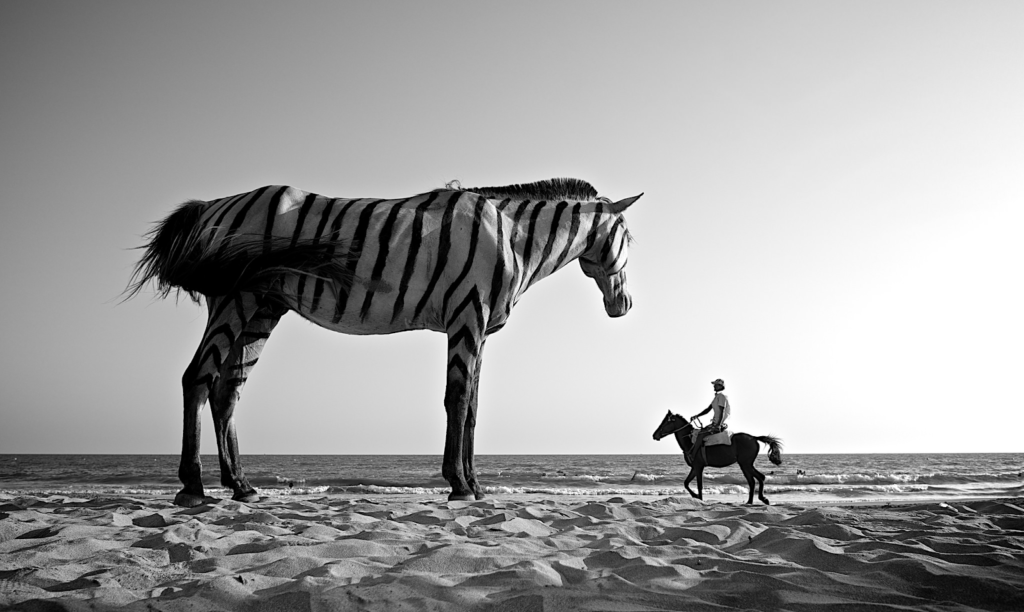

While an abstract photo uses shapes, colours and angles to stimulate one’s perception, surrealistic images place ‘normal’ subjects in a not-so-normal setting.
Photographers can choose between putting extra effort to wait for the perfect weather conditions and lighting before the shot or to save the work for post-production. As long as the end result evokes an eerie, whimsical vibe, your job is done!
22. Travel Photography
Here’s one for the travel enthusiasts. Originating in the 1850s, travel photography became a widespread form through print media such as National Geographic. Travel photos are often used for commercial purposes and have become an excellent source for boosting the tourism sector.
This genre borrows elements from street photography, landscape photography, night photography and sometimes even fashion photography. For example any travel blog on Japan is incomplete without pictures of girls donning the incredible Harajuku fashion.
23. Architectural Photography
As you might have guessed, the subject of architectural photography is the interior or exterior of a building. These photos aim at representing such buildings in a way that is accurate yet aesthetically pleasing.
The sun is an architectural photographer’s best friend for lighting. However, night shots with ambient lighting also produce gorgeous results. Most interior shots focus on the texture of the walls, carvings and minute details.
Since the subject of such shots is a building, which is huge and requires a wide frame, perspective control is essential.
24. Documentary Photography
Falling under the broader group of photojournalism, documentary photography depicts real-life instances, people, places and objects. The difference between this genre and photojournalism lies in the period of the project.
While documentary photos are clicked over a period of time to record an event, photojournalism captures photos in the heat of the moment. After all – the latter is used for breaking news.
Often shot in black and white, a documentary shot may be artistic, amateur or serve an academic purpose.
25. War Photography
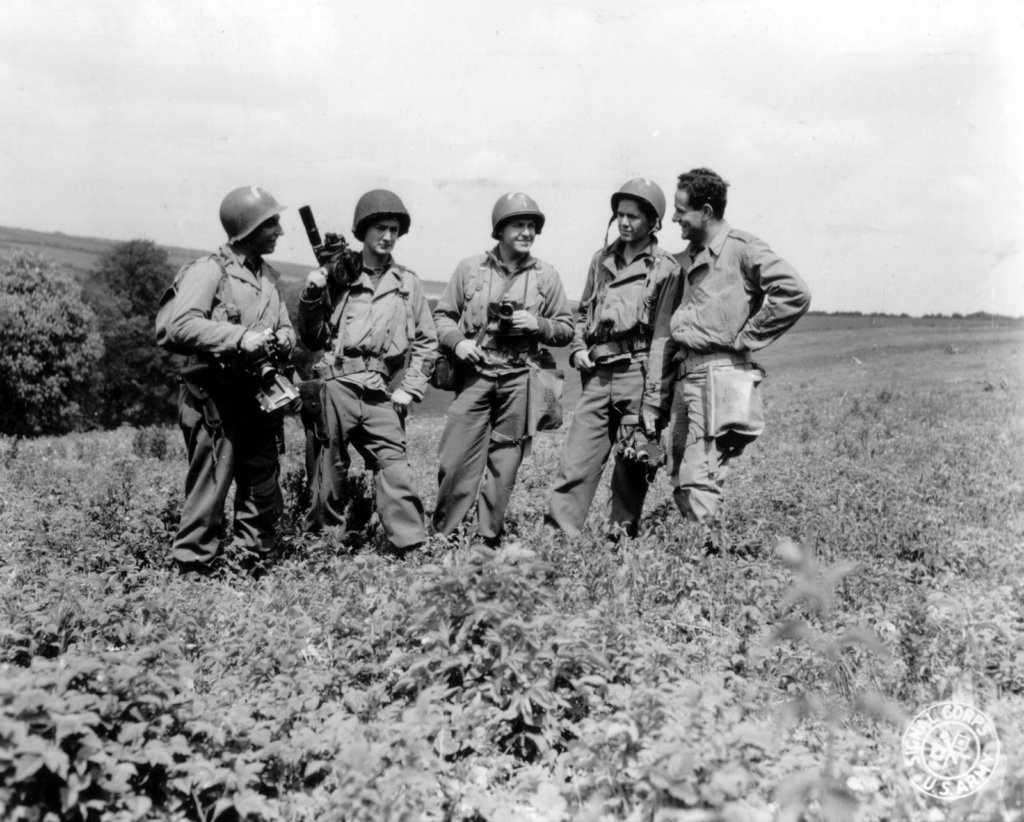

Also interlinked with photojournalism and documentary photography, this genre includes pictures of ongoing war and its destructive impact. Some photographers have even lost their lives while capturing such images.
Although John McCosh was considered the first by most historians, Roger Fenton was the first official war photographer. Due to the lack of photographic equipment, Fenton’s photos of the Crimean War only portrayed still, mostly posed pictures.
26. Pet Photography
Pictures of your beloved furry friends fall under this category. Whether you have a dog, cat, fish or a more exotic buddy like the tarantula, you can capture their portraits and cherish them forever. However, you need to make sure that the photographer is not afraid of creepy crawlies!
Camera equipment is not the only thing pet photographers require at work. They need to carry treats for the cute creatures to bring them to pose a certain way. So, if you are an animal lover and want to pursue photography, specialising in this genre is a win-win situation!
27. Time-lapse Photography
Time-lapse photography is probably something all of us have tried at some point in our lives with our phone camera. It is a chain of shots of the same subject or backdrop, while one or two elements in the picture keep fluctuating.
Such shots are captured over a relatively long period and result in a short video tracing the movement of an element over the course of time. While the bustling city life is the most common subject, photographers even spend months and years to create time-lapse shots of the movement of celestial bodies, flowers blooming, building construction and more.
28. Underwater Photography
Another branch of photography that will appeal to adventure seekers is underwater photography. Such photographers often indulge in activities like snorkelling and scuba diving to achieve impressive shots of marine life. It is important to note that this genre is not just limited to life underwater but also death and decay.
Thus, other than pictures of fish and aquatic plants, snapshots of shipwrecks, underwater ‘landscapes,’ and fellow divers form a massive part of this category.
In addition to a photographer who is skilled in swimming, the equipment needs to be amphibious. While there are tons of modern, underwater options that can cost a bomb, beginners can resort to covering their cameras with plastic pouches.
The major deterrents for underwater photographers include waves and bubbles, strong currents and deadly marine mammals
29. Indoor Photography
Since indoor environments receive minimal lighting, photographers need to be careful about various camera settings. Flash, ISO and shutter speed are the most important aspects of this type of photography. Thus, it can get a little challenging at times.
However, with the comfort and convenience of indoor locations, photographers need not worry about unpredictable weather and unwanted people or elements in the frame. Other than your own house, a coffee shop or a museum, photo studios are a great place for shooting indoor photos.
30. Astrophotography
Nighttime photography that captures celestial bodies, constellations and eclipses come under the category of astrophotography. This form plays a huge role in astronomical research as it records the motion of stars and other bodies that the naked eye cannot see. Consequently, optical telescopes began to serve as giant cameras.
Perhaps one of the most difficult forms of photography, this genre requires a whole lot of equipment and patience. Since most of the seemingly tiny bodies in the sky can form great shots over a course of time, astrophotographers need to be extra diligent and persistent.
31. Drone/Aerial Photography
Drone or aerial photography requires the photographer to shoot from high altitudes in the sky. They can either choose to be up there by flying in a helicopter or aeroplane, or use drones to do the job. However, the latter is widely preferred due to its convenience and affordability.
Needless to say, this field is also quite challenging since it requires special equipment and extra consideration of the weather conditions. Also, some countries follow rules and regulations that restrict the use of drones, so ensure that you have permission to click such pictures.
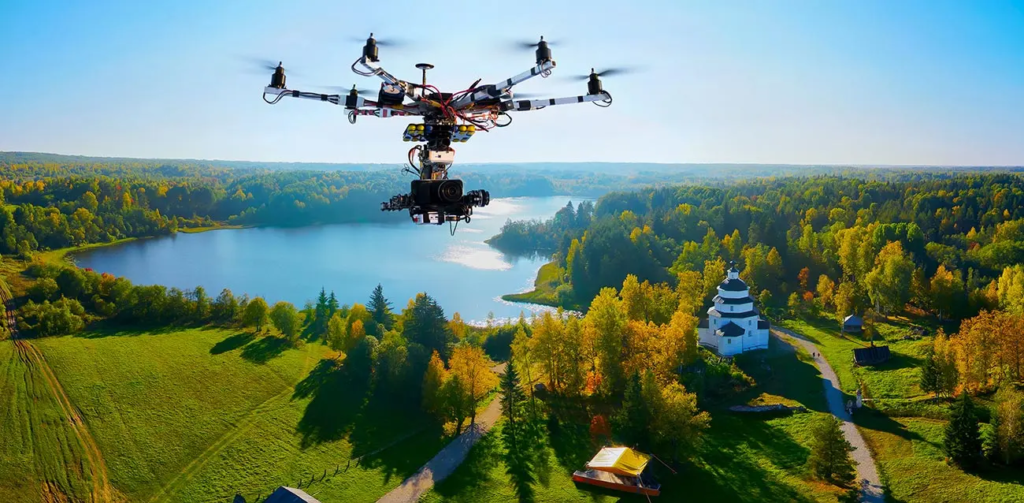

Besides serving commercial and artistic purposes, drone photography is beneficial in movie production, surveillance and inspection, creating maps and a lot more.
32. Still-life Photography
Another aesthetically pleasing and often minimal type of photography, still-life pictures portray non-living objects that are arranged in a visually tasteful manner. Clients may use such images for commercial, editorial or personal use.
The arrangement and composition of these images highlight the creativity of the photographer. Popular subjects for still-life photography include plants, food, vases, stationery, clothes and accessories, and more.
33. Food Photography
If you are a foodie with a passion for photography, you can combine the two loves of your life with this genre!
The subject of food photography is…well, food! From a seven-course meal to freshly cut ingredients, food can be presented in numerous creative and unique ways to appeal to the audience. Mostly used in blogs and advertisements, food photography is essential in marketing food brands and restaurants.
Food photographers are often encouraged to click pictures from different angles rather than the typical overhead shot. Along with them, a team of food stylists and art directors can help bring out the best result.
34. Night Photography
An umbrella term including other genres like time-lapse photography and astrophotography, night photography requires many adjustments and techniques to capture images in low-light. The subjects can range from serene cityscapes and nocturnal fauna to lively concerts and fireworks.
Night photography can require additional equipment like special camera lenses, tripods and self-timers. However, amateurs can make the best of the night mode in their mobile camera settings to try their hand at this genre.
35. Black and White Photography
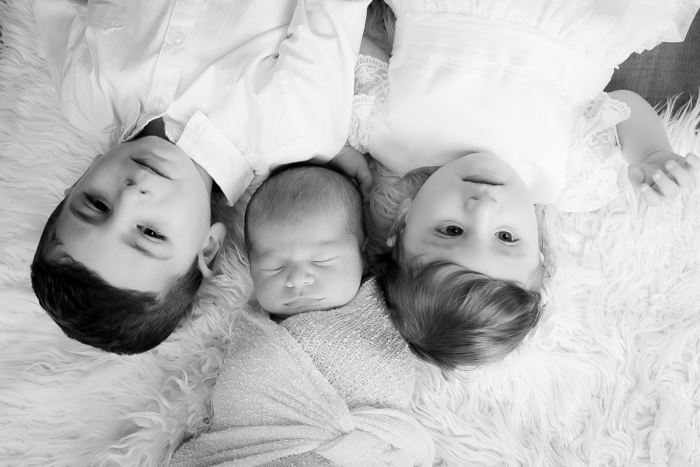

Pretty self-explanatory, photographers can either click these pictures with black and white camera settings or edit them later. Probably the first form of photography that began to be practised due to the limitation in technology, monochrome images ooze with a timeless charm.
36. Seascape Photography
A sub-genre of landscape photography, this category captures vast water bodies, sometimes with other elements surrounding the main subject. Hence, it includes coastal photography as well.
Cityscapes, waves and sun rays reflecting on the water are some popular subjects of seascape or ocean photography. While waterproof equipment and gear are essential, photographers may also await the golden hour or the blue hour to capture the desired shot.
37. Double-exposure Photography
One of the most experimental and fun types of photography, double-exposure shots require capturing and merging two shots. In olden times, it was difficult to achieve such shots without special tools and techniques. Nowadays, modern camera settings, photo-editing software and mobile apps have made the process much easier.
Blending the two photos needs a lot of expertise from the photographer. If done correctly, the result can look whimsical and out-of-this-world. Otherwise, you might even end up with something utterly tacky. There’s no in-between!
38. Street Photography
Scenes of people or inanimate objects in a public place fall under the category of street photography. Often overlapping with urban and fashion photography, these shots may be posed and directed. However, the best street photos are often candid and spontaneous.
Street photographers need to be careful about laws regarding consent. For example, countries like South Korea are very particular about the privacy of passersby in shots of public places.
A popular pick among amateurs, street photography differs from documentary shots in its purpose and intention. Although not always, street photography usually highlights the fast-paced city life focusing on bold colours and textures.
39. Wildlife Photography
Patience is key in wildlife photography which implies taking shots of animals in a wild setting. Depending on the type of animal, photographers often gamble with their own lives to get the perfect shot. Wildlife images are essential for editorials for magazines like National Geographic.
Tripods, macro lenses, camera traps and hides are used to ensure the animals are not disturbed or startled in any way. Using live baits for wildlife photography is considered unethical.
40. Business/Corporate Photography
Used for promotion or marketing, business photography portrays the growth and working environment of a company. Typical subjects include owners, employees, products and services of the respective brand or company.
According to the type of business, this genre may include lifestyle photography, architectural photography and candid shots. These pictures are often used in editorial sections for a particular company’s brochure or website.
41. Urban Exploration Photography
Also known as Urbex photography, this genre allows photographers to explore abandoned places that may be in ruins today. Sharing some aspects with architectural photography, this type of photography is heavily dependent on ambient light.
Photographers must do their research and get permission to visit such uninhabited places with the required safety tools. Remember- trespassing may be okay (only if no one is bothered), but vandalising is not!
42. Infrared Photography
This category requires a special sensor or film that is highly responsive to infrared light. False-colour and black and white settings can be used for a fantastical effect on real-life pictures. During the post-production stage, photographers can play around with settings like saturation, contrast, and blur to enhance the pictures.
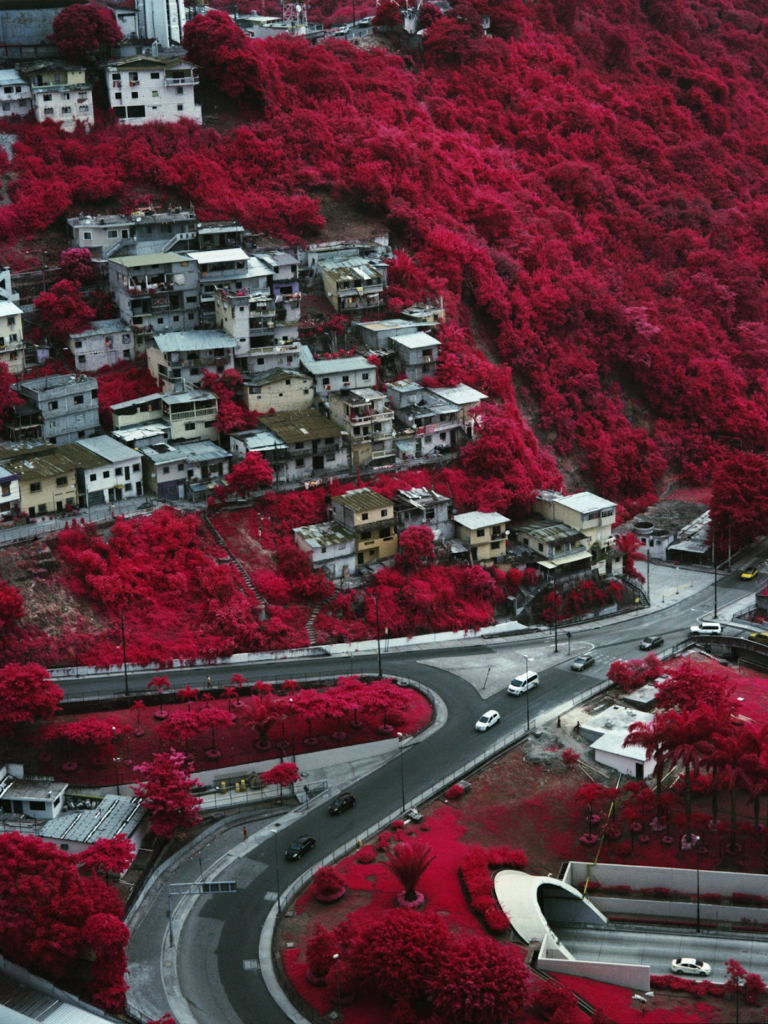

Robert W. Wood, an inventor and physicist, is known to have developed the first infrared photograph. Hence, the ‘Wood Effect’ that transforms the usual green colour of trees, plants, and other vegetation is aptly named after him. Today, most phone apps offer the infrared filter, and you can easily capture dreamy shots without any special equipment.
43. Product Photography
Concerned with capturing products for marketing, this term falls under the genre of commercial photography. Since e-commerce is a booming sector, product photography has gained immense importance over the years. Flatlays, knolling, and ghost mannequins are some of the most popular trends in product photography.
Product photographers can choose to focus on accurately showing the size, colour, and uses of the product or experiment with angles and frames for a more aesthetic appeal.
44. Wedding Photography
Right from pre-wedding shoots and engagement photos to post-wedding and honeymoon shoots, wedding photography is a vast category. With two approaches- photojournalistic and traditional- photographers specialise in this field as it is a lucrative job opportunity.
Photojournalistic wedding images give off an editorial vibe with seemingly candid shots, while traditional photos consist of posed pictures. Some clients even seek photos that overlap with fashion photography.
Props like colour bombs, dry colours and fireworks are used to add a fun element to the image. With the latest ‘trash the dress’ trend, underwater wedding photography is a favourite among couples who seek some adrenaline rush.
45. Golden Hour Photography
Thought golden hour selfies are just for Instagram? Think again because golden hour photography is an actual genre!
Golden hour occurs right after sunrise and before sunset and emits a soft, warm tint that brings beautiful results on camera. Also known as the magic hour, at this time the position of the sun is perfect for capturing photos with soft highlights and less contrast.
On the contrary, blue hour photography refers to pictures taken during the hour before sunrise and after sunset. Those who prefer a cooler, bluish tone prefer this time frame for clicking pictures. Ideally, the blue hour is suitable for cityscapes, while the golden hour is opted for clicking pictures of people.
46. Candid Photography
Nope, candid photography does not mean asking your friend to take a ‘candid’ shot while you look away from the camera!
This type of photography eliminates the possibility of posing as photographers take spontaneous motion shots. The subject of the photo should be in a natural state, perhaps preoccupied with a chore or in a conversation. However, consent is still an important aspect, and your subjects should be fully aware that their pictures are being taken and used.
To capture the authenticity of the moment, candid photography requires discrete equipment, and using flash is not suitable.
47. Real Estate Photography
A parent term for exterior and interior photography, real estate photography deals with commercial pictures of houses and workspaces. Since indoor lighting may not be sufficient, special techniques, gears and equipment are required at times.
Real estate pictures of houses that need to be sold must offer a welcoming and homely vibe. On the other hand, pictures of offices must be presented as well-equipped spaces of productivity. Camera equipment like a wide-angle lens and a tripod will prove beneficial in this category.
48. Milky Way Photography
This one is definitely not for amateurs. Also known as space photography, this genre involves capturing the dazzling Milky Way at night. Due to the low light, photographers need to be skilled enough to accurately set the angle and exposure. Long-exposure can be helpful in such cases.
This field requires a lot of research on the prevailing weather conditions and the best location to get a dazzling shot of the starry night.
49. Newborn Photography
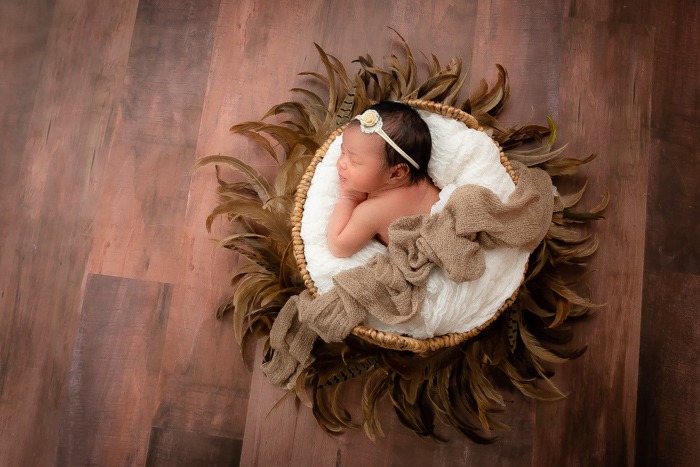

Similar to family photography, the subjects of these pictures are infants. New parents love this type of photography to celebrate their child’s birth and capture moments that can be framed and cherished forever. Newborn photography may or may not feature the parents.
A studio setup with props and accessories are required for newborn photography. Some may even choose to have their pets share the frame with the newborn. While photographers or clients can choose to shoot the baby awake or asleep, the latter is more convenient in terms of posing.
Anne Geddes, an Australian photographer, is the most renowned name in this category.
50. Cityscape Photography
This type of photography captures the urban city life, with subjects often ranging from skyscrapers to signboards. Silhouette cityscape photography is a widespread technique in this category. Photographers can choose to shoot during the day or at night. However, twilight hours are considered to be the best for cityscape photography.
Since you need to capture a large area, a wide-angle lens is highly recommended. Tripods are also a necessity for capturing sharp lines.
You can either click from a tall building or capture the skyline from the bottom, standing between two or more skyscrapers – the choice is yours. Without any strict rules and limitations, photographers can try various angles and experiment with natural light throughout the day to find their best shot.
The complete list of types of photography!
Those were the 50 types of photography you can try your hands on. Whether you are an expert or a budding photographer, your creativity is not limited to your tools and equipment. With an eye for aesthetics and regular practice, you can get great results from your phone camera as well.
In a dynamic sector like photography, who knows, that blurry picture you clicked from an iPhone might be a revolutionary abstract photo? After all, beauty lies in the eyes of the beholder.
So pick up your phone, borrow your brother’s DSLR or hunt for that abandoned film camera in the basement, and get snapping!
